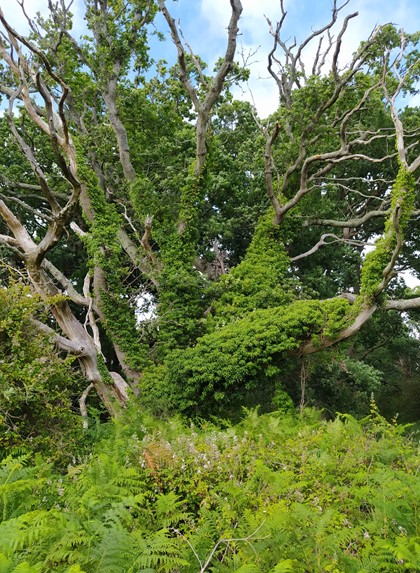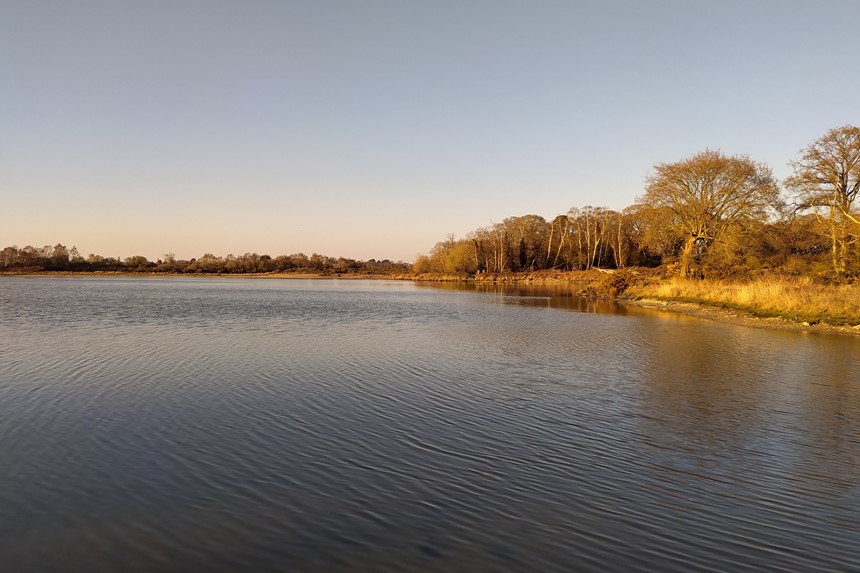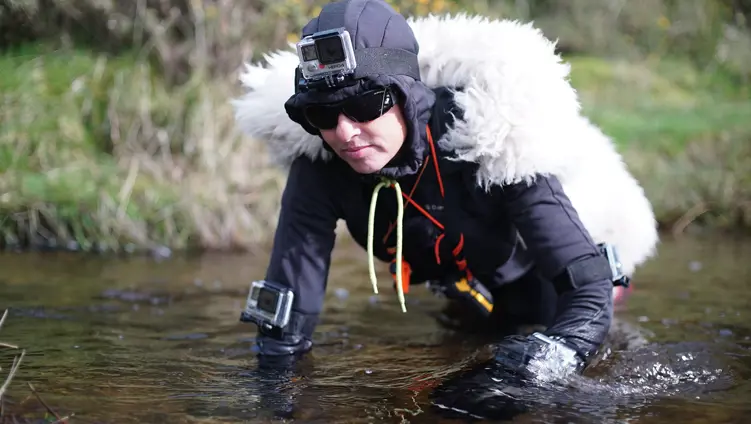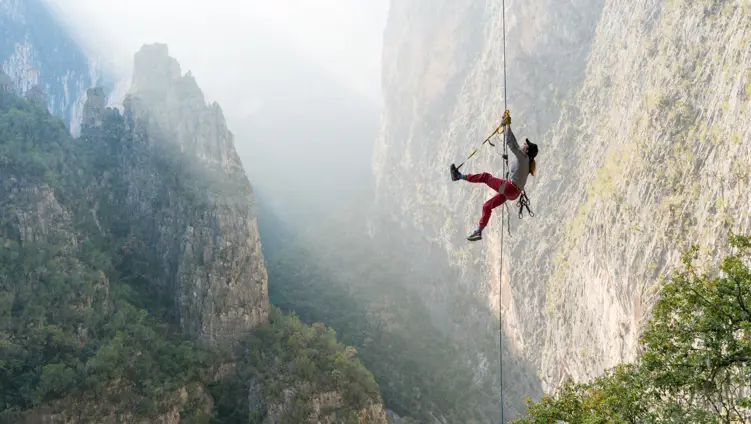The next morning, at 7am, we leave the harbour and Arne behind, paddling east. The wind has picked up overnight and we settle into a rhythm, listening to the waves slapping against our hulls. Studland Beach begins to curl out before us, blissfully deserted.
We are paddling past an old WWII pillbox when I notice another, much larger fort on the cliff above the beach. I’ve not seen it before swimming out into the water, but from kayaks it is unmistakable. In the final, quietest moment of our trip, the screeching violence of history has landed square in front of us, cast in concrete and slowly sliding down the cliffs into the sea. As it turns out, we were unwittingly kayaking through the old firing-line of a devastating strategy.
The full story would only emerge when we got home later that day. Local history blogs, I discovered, are proud to report that the same fort once kept Churchill, Roosevelt and George VI out of the wind as they observed mock landings in preparation for D-Day. The same strategists presumably noticed that Studland might make a tempting spot for a Nazi landing, so it received the attention of the Petroleum Warfare Department.
Inspired by the “awe-inspiring sight” of an oil tanker aflame at sea after the invasion of France, Lord Geoffrey-Lloyd, a wartime cabinet aid, devised a plan to “burn the invader back into the sea.” Churchill was reportedly onboard, so pipelines were installed along likely beaches, ready to pump oil directly into the sea and set it alight. The fire starters were primed, but an invasion never arrived.
Arne was not so lucky. In 1942, 500 tons of Luftwaffe explosives hit the empty heath. Across the harbour, a cordite factory remained silent, unharmed and blacked out. When the first planes were spotted, a small group of soldiers stationed in Arne rushed to set the whole Peninsula ablaze. The first bomber presumed the factory had already been hit, and every pilot followed suit. Locals woke up to raging fires and 200 craters pocked across the heath.
Even in the 1940s, before Studland was considered for the programme, ecologists were aware of the importance of rare sand-dune habitat by the beach - habitat which has since been recognised as a hotspot for spiny and short-snouted seahorses and carbon-sucking seagrass.
When my family walked down to the beach each christening, we would walk past bomb craters filled with newts, frogs and dragonflies without even noticing. Now, knowing why they are there – just knowing that they are there – rankles. When I’m feeling particularly earnest, the craters feel like a wholesale betrayal of the land itself.

















